Patio sectionals have undergone transformative evolution since their mid-20th-century origins, advancing from simple wicker constructions to sophisticated modular designs incorporating durable materials like aluminum and synthetic rattan . These materials offer resilience against weather elements, while style options range from space-efficient L-shapes to grand U-shaped configurations that center social interactions. When planning layouts, the sectional's shape should complement the patio's dimensions and intended use, enhanced by strategic placement of accessories like ottomans for added functionality. Understanding the nuances in materials, styles, and placement strategies can greatly enhance the functionality and aesthetic of your outdoor space. There is always more to uncover on optimizing these dynamic outdoor furnishings.
Historical Development of Patio Sectionals
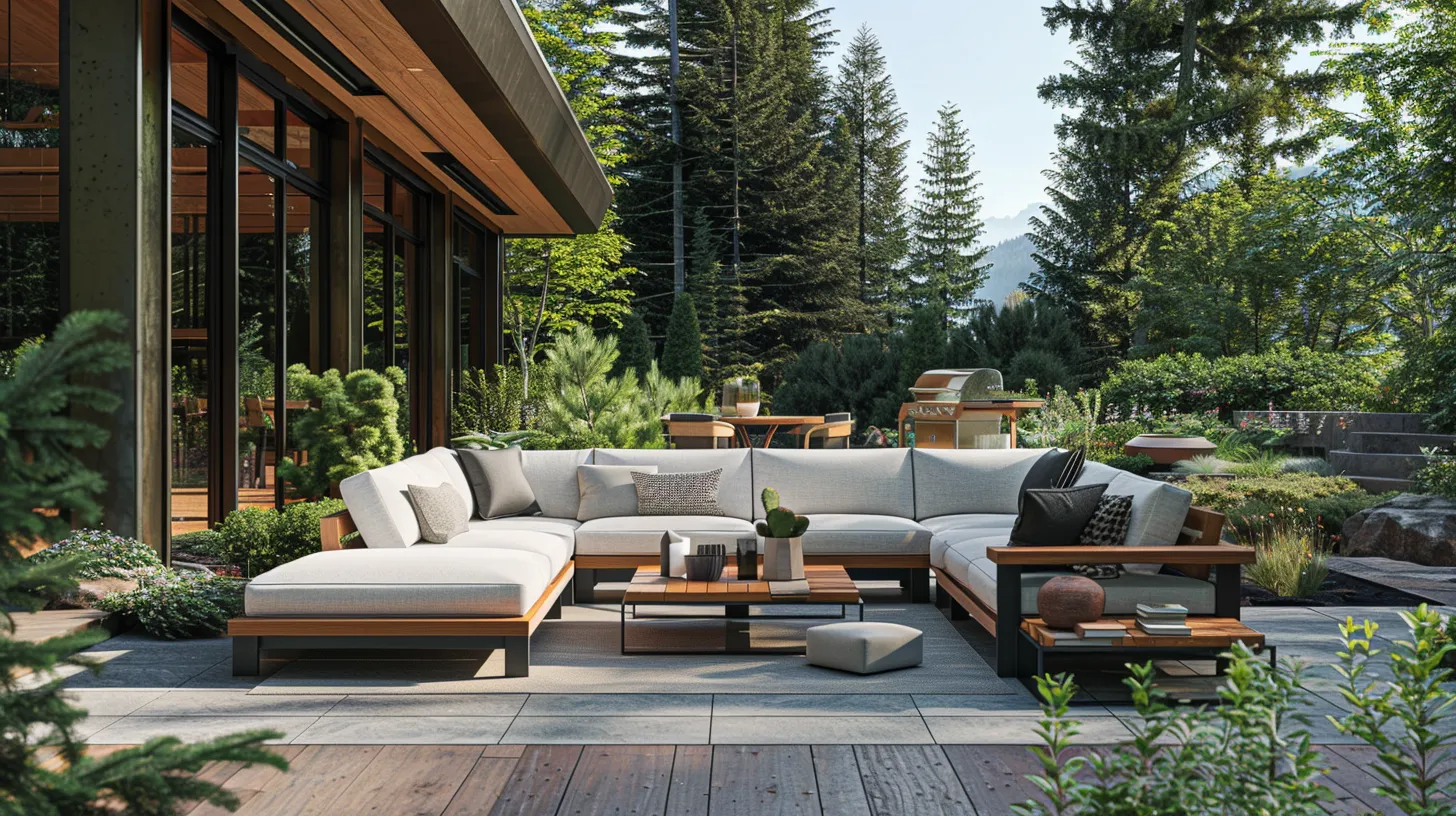
The historical development of patio sectionals reflects a significant evolution in outdoor living, marked by innovations in design, materials, and functionality. Originating in the mid-20th century, their popularity burgeoned as homeowners increasingly valued outdoor living spaces as extensions of their indoor environments. Initially, patio sectionals were often bulky and static, crafted primarily from natural wicker which, while aesthetically pleasing, lacked long-term durability and flexibility in harsh weather conditions.
As demands and expectations for outdoor living spaces escalated, the design of patio sectionals began to shift. Embracing modularity , manufacturers introduced designs that were not only more lightweight but also configurable to various outdoor settings and occasions. This adaptability allowed homeowners to personalize their outdoor living spaces in myriad ways, catering to both small family gatherings and larger social events.
Concurrent with these design advancements, there was a pivotal shift in the materials used. Traditional natural wicker gave way to more robust and weather-resistant materials such as aluminum frames and synthetic rattan . These materials were chosen for their ability to withstand diverse weather conditions while maintaining their aesthetic appeal, thereby enhancing the overall functionality and style of patio sectionals.
Material Selection and Durability
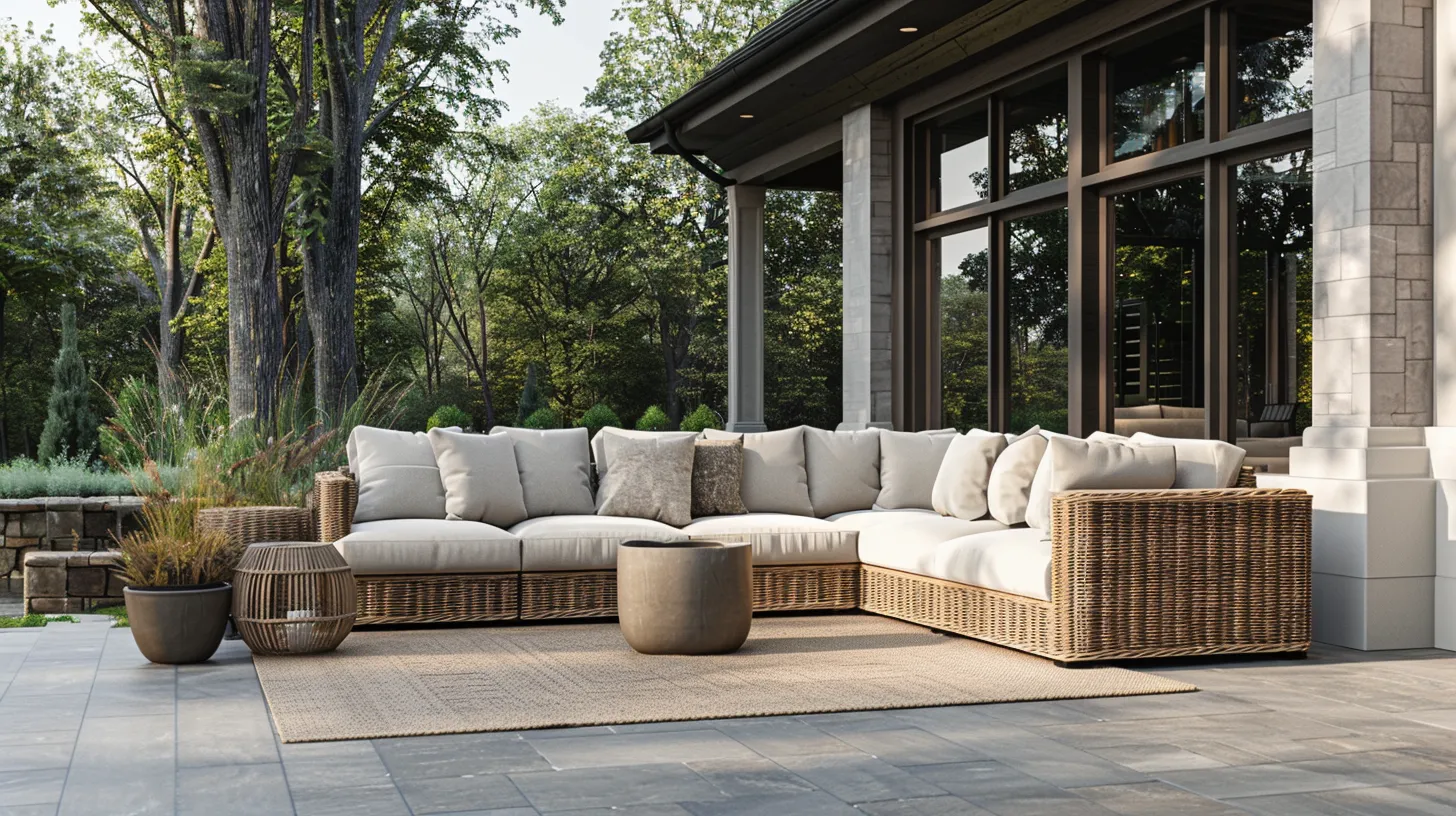
Selecting the right materials is essential for guaranteeing the durability and longevity of patio sectionals. Aluminum frames are favored in the construction of these pieces, not only for their light weight but also for their resistance to rust , which is vital for outdoor environments. When coupled with a powder-coated finish , the aluminum's resilience is greatly enhanced, effectively shielding against corrosion and various weather conditions.
Furthermore, the choice of all-weather wicker or synthetic rattan for the sectional's outer construction merges style with robustness. These materials are engineered to endure outdoor elements without fraying or fading. High-quality Sunbrella fabric for cushions is another critical consideration. Known for its fade-resistant properties and ease of maintenance, this fabric ensures that the aesthetic appeal of your patio sectional remains intact even with continuous exposure to sunlight and varying weather conditions.
Keep in mind, when integrating elements like a fire pit near your sectional, the material's resistance to heat and potential sparks is paramount. Additionally, opting for materials with UV protection is advisable to further safeguard your furniture from sun damage, ensuring that the investment in your patio setup remains visually appealing and structurally sound for years to come.
Diverse Styles of Sectionals
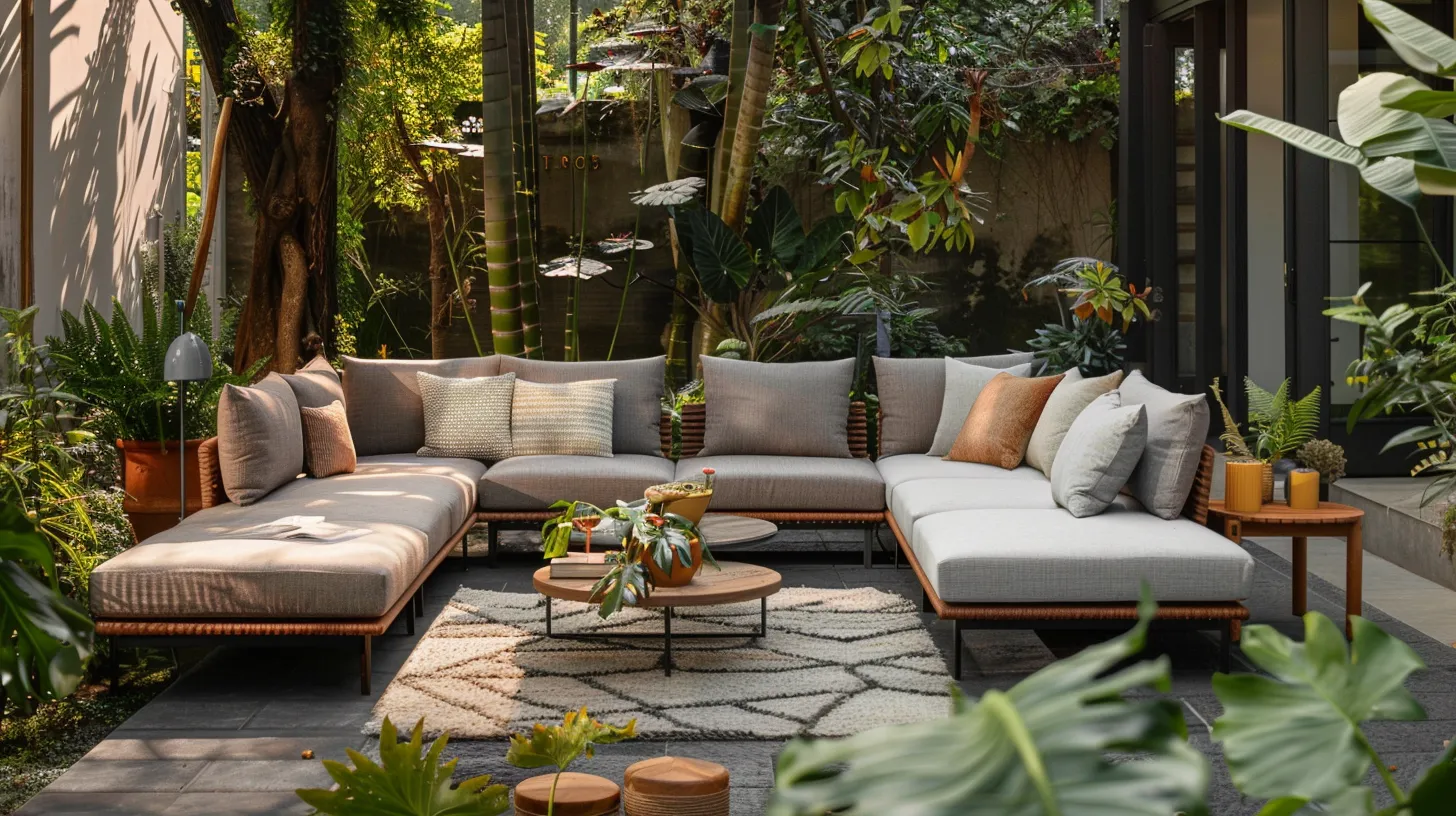
Why settle for a standard layout when patio sectionals offer such a diverse range of styles, including L-shape , U-shape , curved, and modular configurations ? Each style brings unique design nuances to the table, catering to different aesthetics and functional needs. The L-shaped sectional, for instance, fits snugly into corners, maximizing space and seating capacity , making it ideal for both large gatherings and intimate family evenings.
U-shaped sectionals, on the other hand, are perfect for creating a central conversation nook , inviting everyone to join in and interact freely. Curved sectionals add an element of elegance, their smooth lines guiding the eye and encouraging a gentle flow of movement, allowing guests to walk around and engage from various angles. These pieces not only enhance the visual appeal but also foster a welcoming atmosphere.
Meanwhile, modular sectionals offer unparalleled flexibility. Their components can be rearranged to suit changing needs or preferences, making it simpler to adapt the space for different occasions and to Choose the Perfect configuration that aligns with both functional requirements and personal style. Selecting the right style of sectional can greatly enhance the overall ambiance of your outdoor area.
Effective Layout Techniques
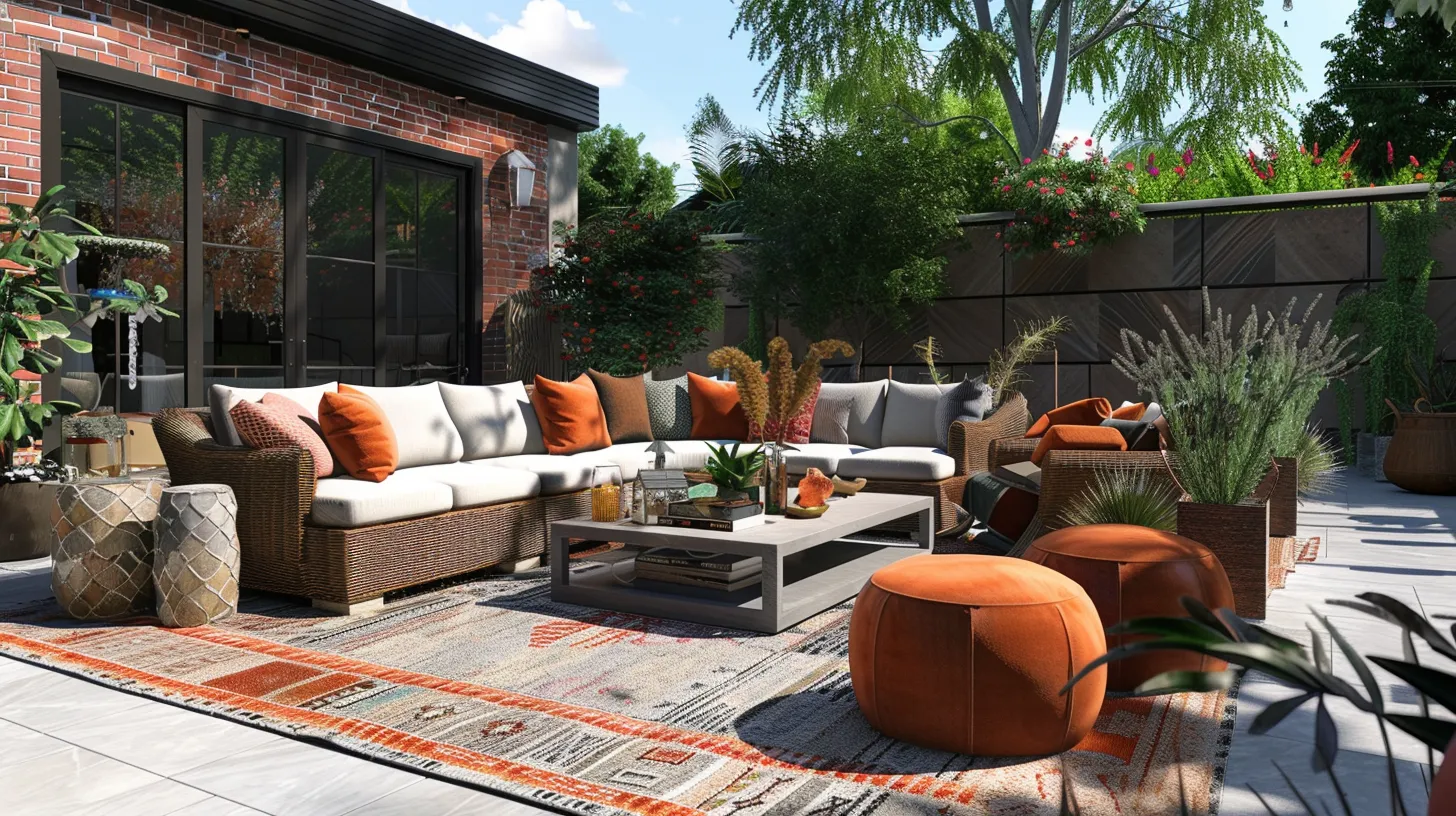
To optimize your patio's usability and aesthetic, carefully consider the sectional's shape and orientation in relation to your outdoor space. Choosing the right layout involves evaluating the dimensions and natural flow of the area. For smaller patios, a straight or L-shaped sectional can maximize seating without overcrowding the space. Larger areas might benefit from a U-shaped or curved layout , which can encircle a focal point like a fire pit or coffee table, creating an inviting atmosphere.
When selecting your patio sectional, it's essential to find the right size that balances the scale of the space with functionality. Modular pieces offer flexibility in design, allowing you to rearrange components based on the occasion or evolving needs. This adaptability makes it easier to refresh the layout without purchasing new furniture.
Enhancing the sectional setup with ottomans and side tables not only adds utility but also integrates additional seating and surfaces for guests. Incorporate natural elements such as plants and strategic lighting to elevate the ambiance. Decorative pillows can inject color and texture, personalizing your outdoor living area while maintaining a cohesive look.
Maintenance and Care Tips
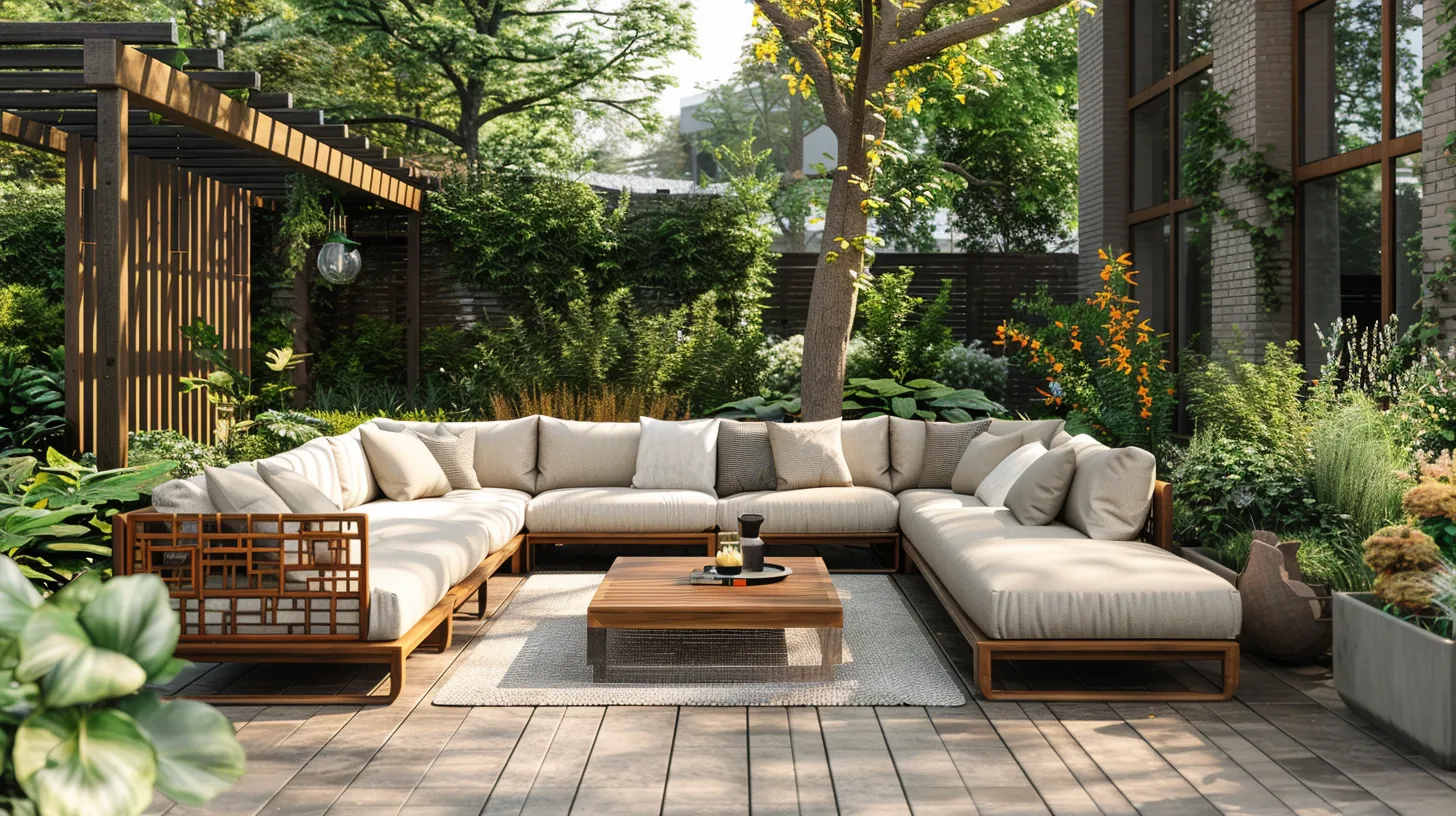
After optimizing the layout and style of your patio sectional, it is important to focus on maintaining its condition and appearance. Regular cleaning is essential and can be efficiently managed using a mild soap and water solution to keep the furniture free of dirt and grime, making sure it remains easy to clean and visually appealing. It's also important to prevent moisture-related issues such as mold and mildew. One effective strategy is to store the cushions in a dry, ventilated area when not in use.
Additionally, safeguarding your sectional during bad weather is crucial; covering it with a weatherproof furniture cover can protect it from rain and sun damage, thereby extending its lifespan . This proactive approach not only preserves the material integrity but also maintains the aesthetic value of your outdoor setup.
To ensure the structure of your patio sectional remains robust, periodic checks should be made to tighten any loose screws or bolts. This maintenance step helps in preserving the sectional's stability and durability. Lastly, it is advisable to avoid harsh chemicals or abrasive cleaners, as these can damage the materials, compromising both the function and style of your outdoor furniture.










